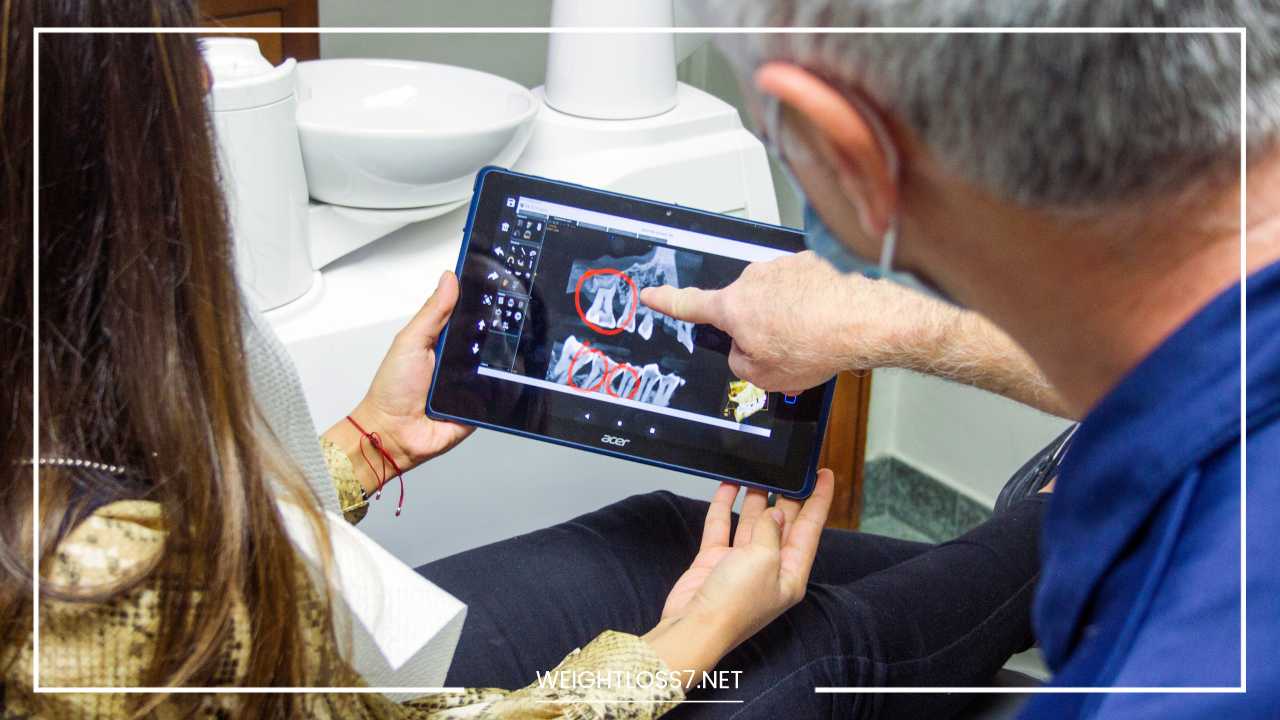Treatments for Missing Teeth

Dental Treatment
Treatments for Missing Teeth: A Guide to Restoring Your Smile
Missing teeth can be a source of both cosmetic concern and functional problems. They can impact your speech, make it difficult to chew properly, and affect your confidence.
But the good news is there are a variety of effective treatments available to restore your smile and improve your oral health.
This blog post will explore the different options for replacing missing teeth, along with their pros, cons, and what factors to consider when making a decision.
We’ll also delve deeper into the specific procedures involved, recovery times, and long-term considerations for each treatment.
Understanding the Impact of Missing Teeth
Before diving into treatments, let’s understand why missing teeth are more than just a cosmetic issue. Here’s how they can affect your well-being:
- Chewing difficulties: Missing teeth, especially molars essential for grinding food, can make it hard to chew certain foods, leading to digestive problems and nutritional deficiencies.
- Speech impediments: Gaps in your teeth, particularly in the front, can alter the way air flows through your mouth, causing speech difficulties like lisping or whistling sounds during pronunciation.
- Shifting teeth: The remaining teeth may shift to fill the gap left by a missing tooth. This can lead to misalignment, crowding, and bite problems. This misalignment can further complicate chewing and increase the risk of gum disease.
- Jawbone deterioration: Without the stimulation of a tooth root, the jawbone can start to shrink. This is because the bone receives signals from the tooth root to maintain its density. Bone loss in the jaw can impact facial structure, causing a sunken appearance and making future implant placement difficult.
- Reduced self-confidence: Missing teeth can affect your smile and how you present yourself, leading to self-consciousness and impacting your social life. You might avoid smiling in photos or social interactions, hindering your confidence.
Treatment Options for Missing Teeth
There are several effective options available to replace missing teeth, each with its own advantages and disadvantages. Here’s a detailed breakdown of the most common treatments:
1. Dental Implants
Considered the gold standard for replacing missing teeth, dental implants offer the closest feel and function to natural teeth.
They are small titanium screws surgically placed in the jawbone to act as artificial tooth roots. Over time, the jawbone fuses with the implant through a process called osseointegration, creating a strong and stable foundation.
An abutment is then attached to the implant, and finally, a custom-made crown is placed on top, mimicking a natural tooth.
Pros:
- Most natural look and feel: Dental implants function and feel very similar to natural teeth. They allow for normal biting and chewing force, restoring your ability to enjoy a variety of foods without worry.
- Long-lasting: With proper care, implants can last a lifetime. The titanium screw integrates with the jawbone, providing a strong and stable base for the crown.
- Prevents bone loss: Implants stimulate the jawbone, preventing deterioration and maintaining facial structure.
- Improved oral health: Implants don’t require altering adjacent teeth, unlike bridges, which helps preserve the health of surrounding teeth.
Cons:
- Surgical procedure: Implant placement requires minor surgery, which can be a deterrent for some patients. The procedure typically involves drilling into the jawbone and placing the implant screw. While generally well-tolerated, some patients may experience discomfort or require sedation during the surgery.
- Costly: Implants are the most expensive option due to the surgical procedure and materials involved. The cost can vary depending on the number of implants needed, geographic location, and dentist’s expertise.
- Healing time: There’s a healing period required after implant placement before attaching the crown. This can take several months, as osseointegration needs to occur for optimal stability.
The Procedure:
A consultation with your dentist is the first step. X-rays and scans will be taken to assess your jawbone health and determine if you’re a good candidate for implants.
If you are, the dentist will develop a treatment plan specific to your needs. The surgical procedure is typically performed in stages.
First, the implant screw is placed in the jawbone. Then, you’ll have a healing period of several months to allow osseointegration to occur.
Once healed, a second surgery might be required to place a healing cap on the implant site. Finally, the abutment and crown are attached, restoring the full functionality and aesthetics of the tooth.
2. Dental Bridges
A dental bridge is a fixed restoration used to replace one or more missing teeth. It consists of artificial teeth (pontics) attached to crowns placed on the healthy teeth on either side of the gap.
These crowns act as anchors for the bridge, essentially “bridging” the gap left by the missing teeth. The bridge is typically made of porcelain fused to metal for durability and aesthetics. The material can be customized to match the color and appearance of your surrounding teeth.
Pros:
- Less invasive: Bridges don’t require surgery compared to implants. The procedure involves preparing the teeth on either side of the gap for crowns, which can be uncomfortable but generally less invasive than implant placement.
- Cost-effective: Bridges are generally less expensive than implants. The cost depends on the number of teeth being replaced, the materials used, and dentist’s fees.
- Durable: With proper care, bridges can last for many years. The lifespan depends on the materials used, oral hygiene practices, and biting habits.
Cons:
- Requires altering healthy teeth: The healthy teeth on either side of the gap need to be reshaped and crowned to support the bridge. This removes healthy tooth structure, which is irreversible.
- Doesn’t prevent bone loss: Bridges don’t stimulate the jawbone, which can lead to deterioration over time. This can affect the long-term stability of the bridge and require additional procedures in the future.
- May require replacement: Bridges may need to be replaced over time due to wear and tear or changes in the supporting teeth. The underlying teeth might decay or become loose, necessitating bridge removal and possible replacement.
The Procedure:
The bridge placement process typically involves multiple appointments. During the first visit, your dentist will examine your teeth and take X-rays to assess your jawbone health and suitability for a bridge.
If you’re a good candidate, the dentist will prepare the teeth on either side of the gap by removing a layer of enamel and dentin.
This creates space for the crowns that will anchor the bridge. Impressions will then be taken of the prepared teeth and the gap to create a custom bridge in a dental lab.
At the next appointment, the dentist will place temporary crowns to protect the prepared teeth while the permanent bridge is being fabricated.
Once the permanent bridge is ready, the dentist will remove the temporary ones and carefully cement the permanent bridge onto the prepared teeth. The fit and bite will be checked and adjusted as needed.
3. Dentures
Dentures are removable replacements for missing teeth. They are typically made of acrylic resin and can be full dentures (replacing all teeth in an arch) or partial dentures (replacing some missing teeth).
Full dentures rest on the gums and cover the entire jawbone, while partial dentures are designed to clasp onto remaining teeth for support. Dentures may require adhesives for better hold and to prevent slipping during speaking or eating.
Pros:
- Most affordable option: Dentures are the most cost-effective way to replace missing teeth. The upfront cost is significantly lower compared to implants or bridges.
- Relatively simple procedure: Compared to implants and bridges, getting dentures is a less complex process. There’s no surgery involved, and the procedure typically involves taking impressions of your jaws and gums to create a custom denture base.
Cons:
- Can affect speech and eating: Getting used to dentures can take time, and they may slip or click while speaking or eating. This can be embarrassing and affect your ability to enjoy certain foods. Practice and proper fitting can help improve speech and eating with dentures.
- Bone loss: Dentures don’t stimulate the jawbone, leading to bone resorption over time. As the jawbone shrinks, the dentures may become loose and require refitting or replacement.
- Reduced taste sensation: Dentures can cover the palate, which is essential for taste perception. This can affect your ability to taste certain foods.
- Requires regular cleaning and maintenance: Dentures need to be cleaned and cared for properly to prevent hygiene issues, such as gum disease and fungal infections. This involves daily brushing and soaking the dentures overnight in a denture cleanser.
Types of Dentures:
- Immediate Dentures: These temporary dentures can be placed immediately after tooth extraction to provide a cosmetic solution while the gums heal. However, they may require adjustments as the healing process progresses.
- Overdentures: These dentures are supported by dental implants, which helps improve stability and prevent bone loss.
4. Orthodontics (Braces)
In some cases, orthodontics may be used in conjunction with other treatments for missing teeth. For example, braces can be used to:
- Create space for implants: If you’re missing a tooth and the adjacent teeth are crowded, braces can be used to create space for implant placement.
- Prepare teeth for bridge placement: Braces can help align teeth that need to be crowned to support a bridge. This ensures a better fit and long-term stability of the bridge.
- Improve denture fit: Braces can help improve the alignment of remaining teeth to create a better foundation for partial dentures, enhancing stability and comfort.
Types of Braces:
- Traditional metal braces: These are the most common type of braces and use metal brackets and wires to gradually move teeth into their desired positions.
- Clear braces: These are less noticeable than metal braces and are made of clear plastic aligners. They are a good option for adults who are concerned about the aesthetics of traditional braces.
- Lingual braces: These braces are attached to the back of your teeth, making them virtually invisible from the front. However, they can be more expensive and may cause some speech difficulties.
Choosing the Right Treatment
The best treatment for missing teeth depends on several factors, including:
- Number of teeth missing: If you’re only missing one or two teeth, implants or bridges might be suitable options. For multiple missing teeth, bridges or dentures might be more appropriate depending on your jawbone health and budget.
- Jawbone health: Dental implants require sufficient healthy jawbone for successful placement. If your jawbone has deteriorated significantly, other options like bridges or dentures might be necessary, or bone grafting procedures might be needed before implant placement.
- Overall health: Certain medical conditions might make you a poor candidate for surgery, impacting the suitability of implants. Discuss your health history with your dentist to determine the best course of treatment.
- Cost: Implants are the most expensive option, followed by bridges and then dentures. Consider your budget and insurance coverage when making your decision.
- Lifestyle and preferences: Some people prefer a fixed solution like implants or bridges, while others might be more comfortable with removable dentures. Consider your preference for maintenance and how much you value a natural look and feel.
Consultation and Diagnosis
The first step towards replacing missing teeth is scheduling a consultation with your dentist. They will conduct a thorough examination of your mouth, including X-rays and scans, to assess your jawbone health, the condition of your remaining teeth, and the number and location of missing teeth.
Based on this evaluation, your dentist will discuss the available treatment options, their pros and cons, and answer any questions you may have.
They will also consider your individual needs, preferences, and budget to recommend the most suitable course of treatment.
Final Word
Missing teeth can have a significant impact on your oral health, smile, and overall well-being. Fortunately, there are a variety of effective treatments available to restore your smile and improve your quality of life.
By understanding the different options, their advantages and disadvantages, and consulting with your dentist, you can make an informed decision about the best treatment for you.
Remember, a healthy smile is not just about aesthetics; it’s about your overall health and confidence. So take the first step towards a brighter smile and a healthier you by scheduling a consultation with your dentist today.
Additional Considerations:
- Maintaining good oral hygiene: Regardless of the treatment you choose, maintaining good oral hygiene is essential for long-term success. This includes brushing your teeth twice a day, flossing daily, and attending regular dental checkups and cleanings.
- Quitting smoking: Smoking can negatively impact healing after dental procedures and increase the risk of implant failure. If you smoke, quitting is highly recommended before and after any treatment for missing teeth.
- Diet: Maintaining a healthy diet rich in calcium and vitamins is crucial for optimal bone health, which is important for supporting implants and preventing bone loss associated with dentures.
Hope this blog post provides a comprehensive overview of treatments for missing teeth. Remember, this information is not a substitute for professional dental advice. Always consult with your dentist to discuss the best course of treatment for your individual needs.

















